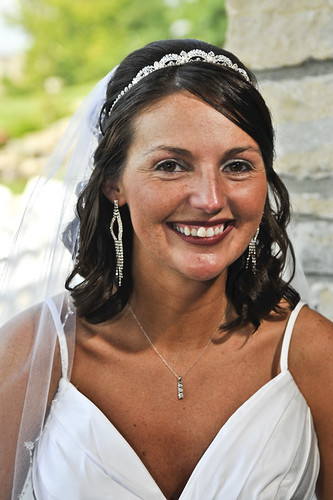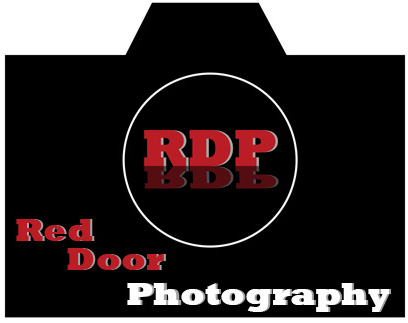
Hey Everyone. Glad to see you back. Lots going on at the studio these days. Wedding season is in full swing so that yields a shoot every Saturday, along with a couple of thousand images a week to edit. Along with the weddings we have multiple projects going on at once, as well as the normal portrait work. To say we're busy would be an understatement, so if I miss a day or three on here, please bear with me and keep checking back for more content. I didn't forget about anyone, I promise. The shot you are looking at is from a wedding we did at the Aston country club. It's a beautiful golf course, and banquet facility, that can accommodate 300+ people. The shot was taken outside of the Downstairs facility next to the beautiful stone work they have there. It was a wonderful setting for a wedding. Also as you can see our bride was beautiful and photogenic so it made our day that much more enjoyable. However the day didn't go without any hiccups. We have been playing around with Auto FP mode lately and it almost bit us in the butt. For those who don't know Auto FP stands for Auto High Speed Focal Plane mode. Never heard of it? Read on...
Auto FP or Focal Plane mode is a mode that allows you to sync your flash at up to 1/8000th of a second. This is great for working in bright light where you want to blur the background with a lower aperture or f/stop. Before we get into how it does that lets take a look at how a normal flash sync works.
The maximum flash sync speed of a camera is the fastest shutter speed that can be obtained while still firing a flash. Most cameras sync speed is between 1/125 and 1/250(reference your manual to find out for your models sync speed). What this means is 1/250th is the maximum period that the shutter will be fully opened so that it can register the entire flash. If you go above that you will start to get a dark line on either the top or the bottom of your image because the shutter was closing as the flash fired. Now if you're inside, or under an overcast sky, this isn't a problem. You can still have your aperture set at f/2.8 and be below your sync speed, but if it's a sunny day(like we had Saturday for this wedding) your shutter speed will increase beyond what the camera can sync at. So how do you still blur the background? Highspeed FP.
Highspeed FP or Focal Plane mode will allow you to sync your flash up to 1/8000 of a second and blur the background. It does this not by increasing it's output, but rather making a series of short flashes throughout the entire shutter cycle. The trade off is power. You have to be extremely close with the flash when you are using FP mode. It's almost a necessity that you have the flash off camera and close to the subject. For this photo:

The flash was just out of the frame literally 6 inches from her face. If it hadn't been that close, there wouldn't have been enough light output to illuminate her face and it would have been underexposed. Notice the nice creamy bokeh in the background? That was possible because of Auto FP. I'll explain. The settings for this shot were ISO200 f/4.0 at 1/800th of a second. Now if he hadn't been in FP mode when he took this image, and he tried to us f/4.0(to blur the background) the camera would have said HI. This means that the maximum flash sync speed(1/250 normally) wouldn't be fast enough, and the photo would have been over exposed. With FP mode he was able to take the picture at 1/800th and get the proper exposure while still using a flash to light the bride.
So auto FP sounds great right? I mean you can shoot faster shutter speeds and lower aperture while still using flash. It's great when you use it on purpose. The Nikon D300's and D700's that we use have a setting in the menu to adjust the maximum flash sync speed. You can have all of the way up to 1/250, but then there's a little option that says 1/250*. The little star means that you're in Auto FP mode. This means that as long as you're shooting at 1/250 or lower the flash will function normally. If however you go above that the camera will automatically switch to FP mode. We shoot in aperture priority mode which means that we select the aperture we want(because we like to control the depth of field) and the camera sets the shutter speed for us. This is bad in Auto FP mode. What happens is you set your aperture for the desired depth of field, and the camera will adjust the shutter speed. Sometimes that depth of field requires a shutter speed higher than 1/250 to make a proper exposure. When that happens, the camera automatically switches to Auto FP, and cuts your flash output dramatically. You have to keep an eye on your shutter speed when in this mode, otherwise you will end up with severely underexposed images. This happened to us on Saturday. Luckily we caught it quickly and corrected the problem by taking the camera out of Auto FP mode.
So to recap, Auto FP is awesome! Just make sure you keep an eye on your light/subject distance, and your shutter speed. Before I go, one more great image from Saturday:

Image by Shad Ramsey/RedDoor Photography All post processing by Me. Have a great day guys! Jason






No comments:
Post a Comment